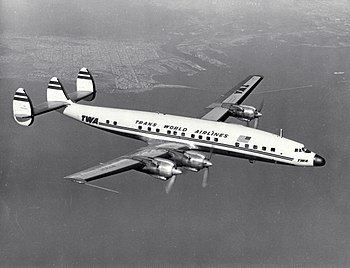Crew 9 Date 26 June 1959 Fatalities 68 (all) | Passengers 59 Survivors 0 Survivor 0 | |
 | ||
Destination Paris Orly Airport (ORY/LFPO, ORY) Similar TWA Flight 513, 1965 Carmel mid‑air co, TWA Flight 800, TWA Flight 903, TWA Flight 159 | ||
TWA Flight 891 was a Lockheed L-1649A Starliner that crashed not long after taking off from Milan Malpensa Airport on 26 June 1959. All 68 passengers and crew on board were killed.
Contents
Flight
On 26 June 1959, TWA Flight 891 departed Malpensa Airport in Milan, Italy with a crew of nine and 59 passengers on board. The flight had originated in Athens and had stopped in Rome before flying on to Milan. The destination of the flight from Milan was Paris' Orly Airport. When Flight 891 departed Milan, the weather conditions consisted of light rain and low overcast with a ceiling of around 2,000 feet and a visibility of approximately two miles (3.2 km). There were also thunderstorms in the area.
Twelve minutes after takeoff, the flight crew reported the aircraft was climbing through 10,000 feet. A few minutes after that, a structural failure occurred to the Starliner and the aircraft broke up in mid-air before crashing. Everyone on board Flight 891 was killed.
Flight 891 was the first fatal aviation accident involving a Lockheed Starliner. In terms of loss of life, it was also the worst air crash of 1959.
Cause
On 24, November 1960, an Italian Inquiry board announced its finding that a lightning strike had brought down Flight 891. "The breaking-up in flight was due to the explosion of the fuel vapors contained in tank No.7, followed immediately by either an explosion of pressure or a further explosion in tank No.6. In the absence of other significant concrete evidence, taking into account the stormy weather conditions, with frequent electric discharges, existing in the area at the time of the crash, it may be assumed that the explosion of the fuel vapors contained in tank No.7 was set off, through the outlet pipes, by igniting of the gasoline vapors issuing from these pipes as a consequence of static electricity discharges (streamer corona) which developed on the vent outlets."
